- Home
- William W. Johnstone
A Good Day to Die Page 28
A Good Day to Die Read online
Page 28
Swamper fell back in a heap on the roof, shotgun falling from his dead hands into the street.
Below, the brave standing beside the window peered through gaps in the nailed-up boards. Plenty of human targets were scattered around inside the gambling hall. He fired inside, cutting down a man who stood on the other side of the floor at the east wall.
Defenders fired back, tearing holes through plank boards, sending splinters flying, but the brave ducked under cover and remained unhit.
Ryan climbed to the top of the stairs, turning left on the landing, moving along the balcony to a window overlooking the street below. The window was unboarded, open.
He peeked out cautiously, looking for the Comanche who’d just shot through the window. Instead, he saw a brave shinnying up a drainpipe, climbing up the side of the building. It was the one who’d shot Swamper, though Ryan had no way of knowing that.
The climber was almost level with Ryan. They saw each other at the same time.
Ryan’s rifle was at the ready. He fired into the Comanche at point-blank range, blasting him off his perch.
The climber dropped, narrowly missing a brave standing pressed against the wall with his rifle raised to fire again through the window. Ryan shot him, too.
A lone Comanche came galloping in from the north, riding along the eastern edge of town toward the courthouse. He heaved a ball-like object through the open space of a high window, clear above the plank barricade and into the building. It hit the courtroom floor, rolling for some fair yardage before bumping to a halt against a wooden bench.
Yipping his defiance, the brave wheeled his horse around, racing back to cover.
The object was revealed to be a human head, un-scalped, the deliverer having used its longish hair as a handle by which to hold and fling it inside.
Somewhat the worse for wear, it was still recognizable as the severed head of Hapgood, the other rider who’d set out at nightfall to reach the cavalry troop escorting Major Adams’s wagon train west of the Breaks.
Whatever else, the cavalry would not be riding to the rescue of Hangtown.
TWENTY-THREE
With violent clashes peppering the Four Corners, Red Hand assembled his men for the main assault.
They came out of the eastern treeline on horseback, filtering from behind the brush, the woods yielding a seemingly inexhaustible supply of Comanche warriors.
Streamers and banks of morning mist drifted above the earth, giving the initial appearance of the braves a dreamlike aspect, as if they were phantoms materializing from the gloom.
They took on an all-too-solid reality as they came forward—at least a hundred and twenty-five of them ... or more.
A long line of mounted braves, several ranks deep, stretched out on both sides of Hangtree Trail. They faced the town in a front reaching from Commerce Street north of the courthouse to Hobson’s livery stable in the south.
The Comanches sat silently on their ponies, hard, stoic, remorseless.
They carried rifles, carbines, muskets, six-guns, lances, bows and arrows, tomahawks, stone-headed war clubs, and knives. Many wore round buffalo-hide shields over one arm.
They were well armed. Red Hand had seen to that. Anglo and Mexican captives—young women, mostly, but also boy and girl prisoners hardy enough to withstand the harrowing ordeal—had been traded for weapons and ammunition in advance of the Great Raid. They’d been herded overland to secret meeting places deep in the Staked Plains where renegade Comancheros camped, swapping whiskey and guns for human flesh. The captives were ultimately sold into slavery deep in the remote vastness south of the Rio Grande, never to be seen again by friends and family.
Red Hand took his place at the center of the front, brandishing the Fire Lance. The real, authentic Fire Lance, the one he’d taken from an Austro-Hungarian cavalryman who’d come a long way from home to die in service to Maximilian’s foredoomed Empire of Mexico.
He used it as a baton, conducting and directing the movements of his men. It was dormant, un-torched, for its fiery aspect lost its impact in the light of day.
In their perch high in the church tower, Sam Heller and Johnny Cross could see some, but not all, of the Comanche battle line where it extended north and south beyond the courthouse. Its center was blocked by the courthouse itself, shielding Red Hand from being targeted by Sam’s long rifle with its telescopic sight.
“Looks like Red Hand’s getting ready to make his move,” Johnny acknowledged.
“He’s tricky,” Sam stated. “If he’s showing himself in the east, it means you better look west. The bunch at Four Corners, Barton, Lassiter, Zorn, and the rest of them are better positioned to deal with him than we are. We’re here to guard the back door.”
And so they were. East, the ground was open with little cover, affording clear fields of fire to the defenders. West, the approach to Four Corners consisted of the street grid, with much cover provided by blocks of buildings honeycombed with streets, lanes, and alleys.
If Sam had been making the attack, he would have directed his forces to come in singly or in combination from the north, south or west, with minimal concentration of attackers coming from the east. That’s why he had set up his sniper’s nest in the church tower, giving him good firing lines along the north, south, and west approaches.
By the same logic, the flat west of the church would be a prime staging area to marshal forces for an attack. Charging horsemen could work up a nice head of steam crossing east across open ground.
The knoll on which the church and Boot Hill were sited would screen the attackers from view of those in Four Corners until the charge topped the rise. That’s why Sam had planted red-staked blast pits on the flat.
If he’d guessed wrong, and the Comanches did not come from the west, he could still do plenty of damage to them with his scoped rifle from the church tower heights.
So he and Johnny Cross guarded the back door, scanning the landscape for a west-based assault.
Sure enough, Red Hand had divided his forces. A second Comanche band appeared, coming out of the stepped ridges in the north. They crested the nearest ridge, having hidden behind it in a valley.
“I make ’em about seventy-five or so,” Johnny said.
This second assault force was quiet, with no screaming defiance, no war whoops. They came downhill, wheeling east to form up in a long line at the far side of the flat.
Prone on the floor, holding his face over the open hatch, Johnny looked down into the dark well of the tower shaft. Putting two fingers to his mouth, he whistled several times, sharp and shrill.
Lockridge entered the bottom of the well, looking up. “They’re coming!” Johnny called.
“We see ’em!” Lockridge replied.
“Hold your fire till the first blast.”
“Okay—but don’t wait too long!”
At the center of the Comanche line leading the sortie was a Titan figure with lines of scalps hanging from the reins of his horse. Ten Scalps. A Bison Eye who’d been with Red Hand since the beginning. A copper-hued Hercules, he was mounted on a big quarter horse, a dappled white and gray charger.
He led his band of seventy-five braves east across the flat toward the rise, their path taking them straight across the field of red-banded stakes. Onward they came, inexorable.
Gesturing with the lance, Red Hand set his warriors into motion. Forward!
The main body of Comanches advanced, coming from a power position, attacking with the rising sun at their backs. The quickening charge unleashed shrieking war whoops and drumming hoofbeats.
The long line swept westward, its swift rush narrowing the distance between them and the defenders.
They rode on, prime targets for sharpshooters Pete Zorn and Steve Maitland in the clock tower, Boone Lassiter on the courthouse second floor, Deputy Smalls and some of the Dog Star marksmen at the jail, and Hobson and a knot of riflemen at the livery stable.
At the last moment, reaching the hinge where the Hangtree Tra
il ran into town, the Comanche line broke in two at the center. Half the line peeled off to the left, the other half to the right.
A canny campaigner like Red Hand was too smart to charge straight into the guns of the enemy’s strongpoint. The twin halves of the line swung around to the sides, setting up a pincer movement to flank the north and south ends of Four Corners. The objective: surround the stronghold and arrow in, swarming it where it was most vulnerable.
His men broke off the full frontal charge well short of the eastern fields where the red-banded stakes lay, circling around to the sides. A lucky break, or the result of foresight and strategy?
The answer remained to be seen.
Red Hand’s attack was loud, heard clear across town, to the church knoll and beyond. It cued Ten Scalps to launch his attack.
Digging his heels into his horse’s flanks with such force the animal shuddered in pain, Ten Scalps charged forward. His followers did the same. The earth shook under their hoofbeats.
Sam’s nerves were taut. The issue would be joined directly, in a matter of seconds. Ten Scalps and his seventy-five braves were fast narrowing the distance between themselves and the knoll.
“Come on, come on. Let them come on.”
Ten Scalps was in his glory leading the charge. A bull of a man, a magnificent physical specimen, he held. a rifle in one hand, and motioned his band forward toward the knoll and Hangtown below ... charging straight into the field of red-banded stakes.
Sam timed his move with nice delicacy, waiting until the thundering herd was deep in the red-staked field. At the head of the charge, Ten Scalps was almost clear of the flat.
Sam took a stance in the belfry, using the square upright column for cover. Shouldering the rifle, he pointed it downward at the near end of the field. Sighting on the red-staked center of the closest dynamite pit, he squeezed the trigger. A hot round ripped into a bundle of buried dynamite just as Ten Scalps rode over it.
Kaboom! The tremendous explosion erupted like a vest-pocket volcano blowing its top, spewing light, heat, and violent energies. Geysering earth heaved up in a fan-shaped cone of flaming death.
Caught in the middle of the blast, Ten Scalps disintegrated, along with his horse.
Shockwaves ripped through several dozen braves riding nearby, obliterating them and their mounts in an upthrust wall of yellow-red glare. They were hurled skyward in a heap of body parts. Down they came, but not too soon—they’d been blown pretty high up.
The church rocked from the ground floor to the spire. The belfry roost shivered. Having been wrapped in muffling layers of cloth and tied down in place earlier, the church bell did not toll. It quivered with vibrations, sending out a metallic teeth-rattling hum, which Sam felt in his bones.
No sooner had he popped off the nearest blast pit than his rifle swung toward the next. He scoped out another red-tied stake and triggered it, blowing a big hole in the stunned and stricken Comanche charge and shredding men and mounts.
Gore fountained. Dust and chaff showered down from inside the spire above, shaken loose by the shock waves of the blast. Sam hoped the church bell or the spire itself wouldn’t crash down on their heads.
He sighted on a red-staked pit toward the left rear of the mass of braves and fired.
Another earthshaking blast rewarded him. Curtains of roiling black smoke rose up, wrapped with writhing red serpents of flame. Dirt, smoke, and debris temporarily obscured part of the scene.
A fresh explosion surprised Sam, detonating in the northwest quadrant of the field of death. It was one he hadn’t triggered.
Johnny Cross had, tagging it through the open sights of his rifle. He flashed a tight grin at Sam.
Hangtown had no cannon. Such heavy guns had been confiscated or spiked by Union troops in the unhappy aftermath of the War. Yet the braves’ charge was ripped and rended as if shattered by cannon balls. The field was an annex of Hell, scored with blast craters and scorch marks.
Smoking craters vented black-gray pillars of smoke, creating too much murk and chaos for Sam or Johnny to see the red-tied stakes for a moment. But they could still see plenty of Comanches, outlined shapes streaking through the palls of smoke and fire. A cluster of them changed course, charging the church.
Johnny waved a hand, getting Sam’s attention. He held an unlit bundle of dynamite.
Sam nodded.
Pitching it overhand, Johnny heaved the bundle at the oncoming attackers below.
Sam fired, hitting the bundle and detonating it in midair above the attackers. Bodies arrowed outward in all directions from the center of the blast.
Gunfire ripped in the church below as Lockridge and Bayle fired on the foe, knocking them down.
A ragged knot of Comanches rode up the far side of the knoll. Johnny let fly with another bundle of dynamite, a round from Sam’s rifle touching it off.
The slope was cleared.
Sam began picking off the remaining braves one by one, shooting them off their horses. Johnny hefted his rifle and did likewise, while Lockridge and Bayle in the church below continued to cut loose.
The charge in the west was broken, its force crushed. Survivors scattered, fleeing the killing field.
Red Hand’s man Sun Dog led the Comanches’ right wing north, his kinsman Badger taking the left wing south with the all-important task of stealing the horses penned in the Big Corral. The prime stock fenced in behind the barricades was as attractive to them as a bank ripe with gold bullion would have been to outlaws. Irresistible!
His job was to break the ring of the Big Corral and run off the herd. The animals could always be rounded up later. Denied the use of their mounts for a getaway attempt, the townfolk would be pinned in place for conquest. Rape, torture, and slaughter!
The Big Corral was not without its defenses. Hobson, Squint McCray, and a half dozen other top riflemen were posted in the second-story loft of the livery barn. More were on the ground floor.
Shooters were atop the raised firing platform along the east wall of the barricade running between the jail and the stable. More were on top of and in the carpenter’s shop and the lumberyard. A squad of riflemen was on the jailhouse roof.
The Big Corral thronged with scores of horses. They were penned in the center of the enclosure, secured by hitching lines and hobbles.
Badger’s wing of braves swept south of town, curved west, then swung north to charge the rear of the livery barn and south wall of the Big Corral. The braves massed in a column six mounted warriors wide, ten ranks deep.
With Badger at their head, they came hard and fast, their horses straining at the bit. They were a storm force meant to crash through the barrier at its weakest points, the barricades between buildings.
The charge whipped into open ground south of the pen. It was ground marked with red-banded wooden stakes laid out at regular intervals.
If Badger or any of the charging braves noticed the layout, it was only to reflect for an instant that the White Eyes were always up to some such ritualistic nonsense marking out the lands they’d stolen from others.
The vanguard of the column churned north into the red-staked field. Squint McCray fired first, aiming his rifle through a gun port in the rear wall of the loft and placing a shot into a dynamite pit.
The world blew up and Badger along with it, taking many others at the tip of the Comanche spear.
In the loft, Hobson and other sharpshooters pumped lead into red-staked patches, a sudden succession of shattering blasts scourging the Comanche column and shaking Four Corners.
Having been at the center of the front when it broke in half, Red Hand found himself at the rear of the right wing column as Sun Dog raced north.
His column’s left flank raked by gunfire from the courthouse front, he rounded the structure’s north end, and bulled west onto Commerce Street. Sun Dog’s group swarmed the area when suddenly the street itself exploded, detonated by the snipers in the clock tower shooting into red-staked patches of earth positioned throughout
the thoroughfare.
Solid ground turned into a torrent of hellfire, blasting Sun Dog and his band. Shockwaves pulped the braves, pulverizing them into white-hot jelly. Men and mounts went up like dead leaves tossed onto a bonfire, heat waves searing flesh off the bone, turning bodies into charred wreckage.
Red Hand and those at the tail end of the column were stunned by the sudden fury. They were dazzled by flashes of white light bursting on every side. The light turned red-yellow-orange, throwing up clouds of debris and inverted pyramids of black smoke.
Between the blasts, high-pitched cackling—laughter—rung out from the clock tower. Pete Zorn was having fun. “Lookit them feathers fly! Better’n a turkey shoot!”
Ever alert, Red Hand swiftly reined in his silver horse, curbing it violently. For most of the column ahead of him it was too late to turn back.
By the time the last dynamite pit had been detonated, the main attack was blunted and broken. The explosive hellfire was the equalizer, the secret weapon that evened up the odds.
A number of braves filtered into Trail Street. Seeking the quickest way out of town, they looked west, finding not open space and empty sky, but rather a curtain of gray-brown clouds rising to the heavens—mute testimony to the killing field beyond the knoll. The church and the Hanging Tree on Boot Hill showed as vague, indistinct outlines wavering in the smoke.
With much of Hangtown a chaos of fire, smoke, and carnage, the citizens unleashed their counterattack. Rifle squads fired fusillades through swirling smoke, dealing mass death to the stunned Comanche survivors of the dynamiting. Pistols were pressed into service for close-in work.
With Red Hand’s horde decimated, discouraged and disoriented, the townfolk were able to complete the rout, cleaning up isolated pockets of resistance.
Even the most fanatic Bison Eye stalwarts—those few who remained—lost heart. The truth was plain to see: the raid was a failure.

 Riding Shotgun
Riding Shotgun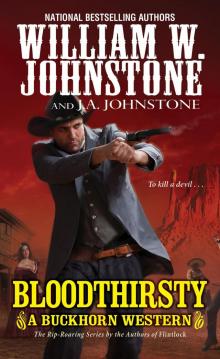 Bloodthirsty
Bloodthirsty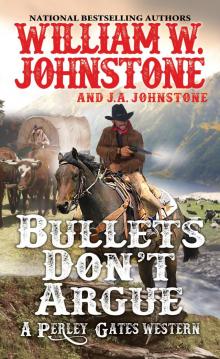 Bullets Don't Argue
Bullets Don't Argue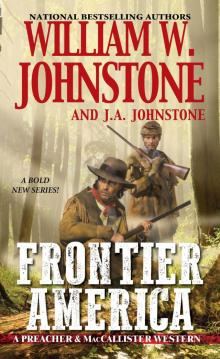 Frontier America
Frontier America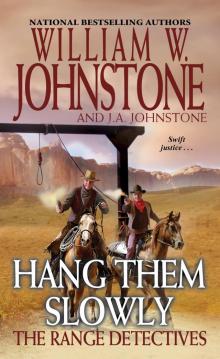 Hang Them Slowly
Hang Them Slowly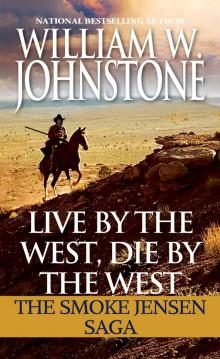 Live by the West, Die by the West
Live by the West, Die by the West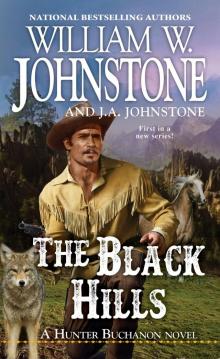 The Black Hills
The Black Hills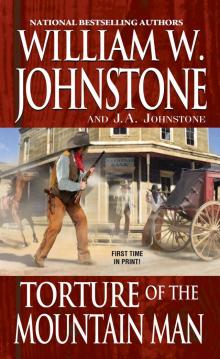 Torture of the Mountain Man
Torture of the Mountain Man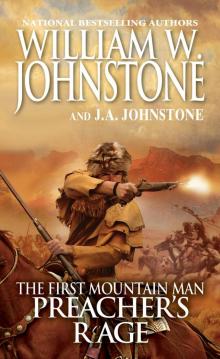 Preacher's Rage
Preacher's Rage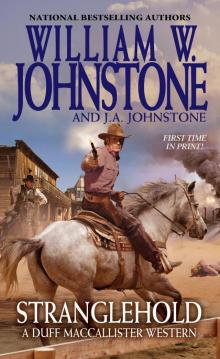 Stranglehold
Stranglehold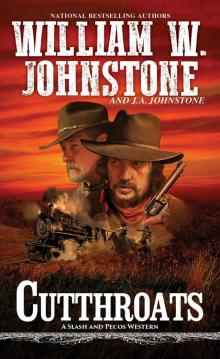 Cutthroats
Cutthroats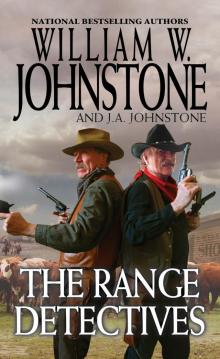 The Range Detectives
The Range Detectives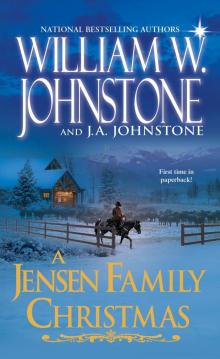 A Jensen Family Christmas
A Jensen Family Christmas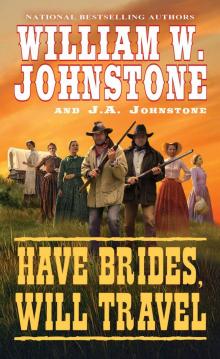 Have Brides, Will Travel
Have Brides, Will Travel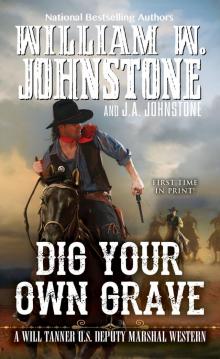 Dig Your Own Grave
Dig Your Own Grave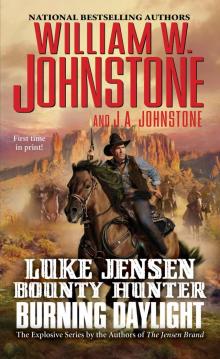 Burning Daylight
Burning Daylight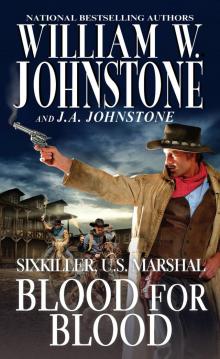 Blood for Blood
Blood for Blood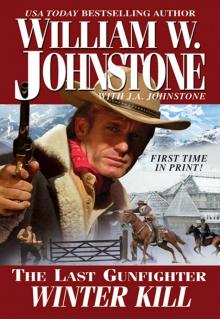 Winter Kill
Winter Kill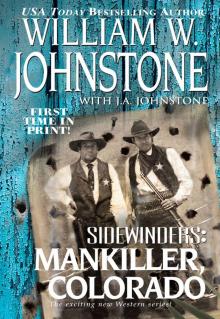 Mankiller, Colorado
Mankiller, Colorado Preacher's Massacre
Preacher's Massacre The Doomsday Bunker
The Doomsday Bunker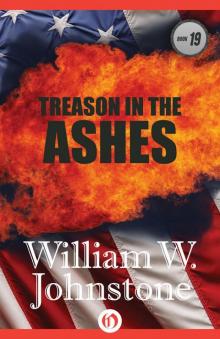 Treason in the Ashes
Treason in the Ashes MacCallister, The Eagles Legacy: The Killing
MacCallister, The Eagles Legacy: The Killing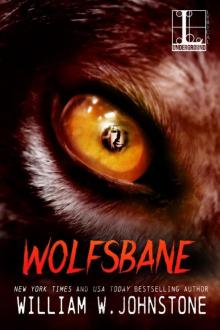 Wolfsbane
Wolfsbane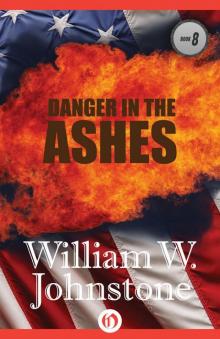 Danger in the Ashes
Danger in the Ashes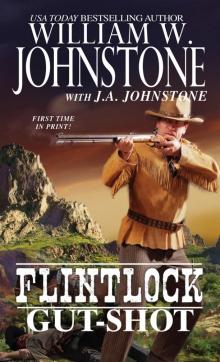 Gut-Shot
Gut-Shot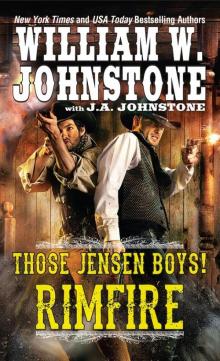 Rimfire
Rimfire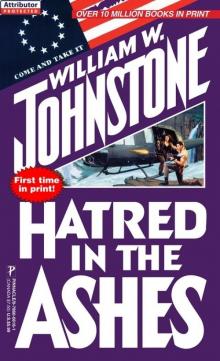 Hatred in the Ashes
Hatred in the Ashes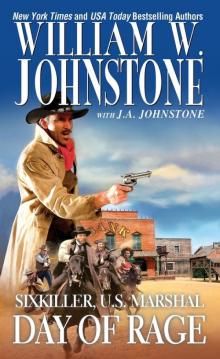 Day of Rage
Day of Rage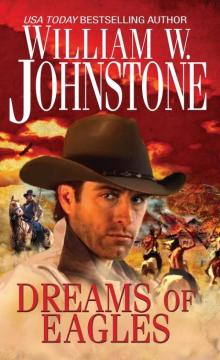 Dreams of Eagles
Dreams of Eagles Out of the Ashes
Out of the Ashes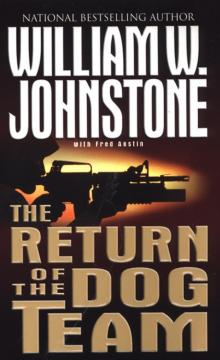 The Return Of Dog Team
The Return Of Dog Team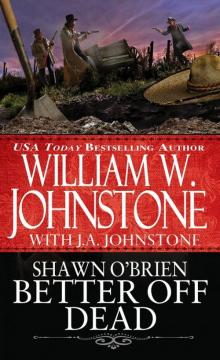 Better Off Dead
Better Off Dead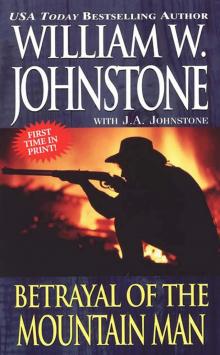 Betrayal of the Mountain Man
Betrayal of the Mountain Man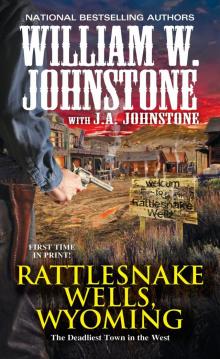 Rattlesnake Wells, Wyoming
Rattlesnake Wells, Wyoming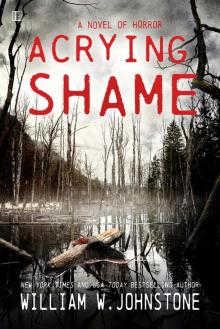 A Crying Shame
A Crying Shame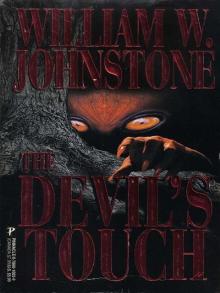 The Devil's Touch
The Devil's Touch Courage In The Ashes
Courage In The Ashes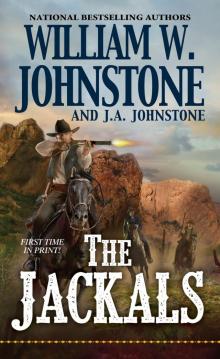 The Jackals
The Jackals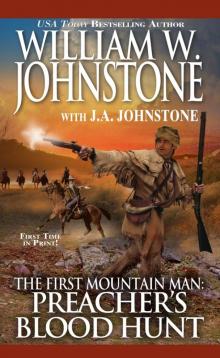 Preacher's Blood Hunt
Preacher's Blood Hunt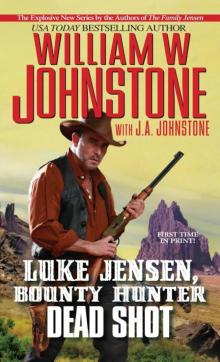 Luke Jensen Bounty Hunter Dead Shot
Luke Jensen Bounty Hunter Dead Shot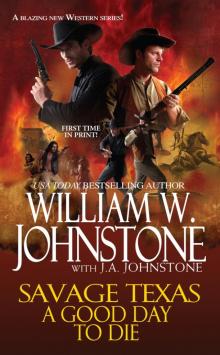 A Good Day to Die
A Good Day to Die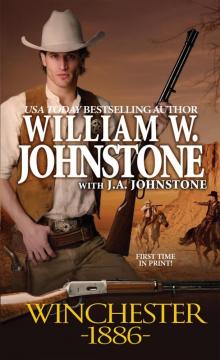 Winchester 1886
Winchester 1886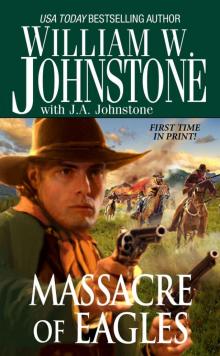 Massacre of Eagles
Massacre of Eagles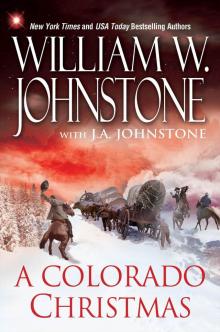 A Colorado Christmas
A Colorado Christmas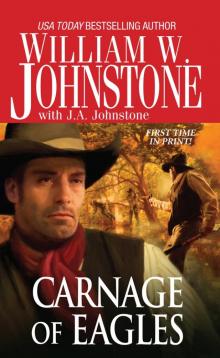 Carnage of Eagles
Carnage of Eagles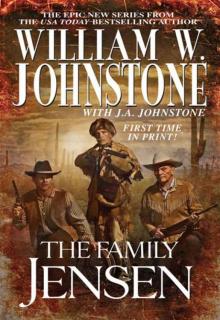 The Family Jensen # 1
The Family Jensen # 1 Sidewinders#2 Massacre At Whiskey Flats
Sidewinders#2 Massacre At Whiskey Flats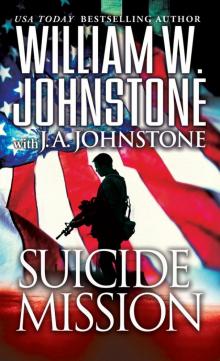 Suicide Mission
Suicide Mission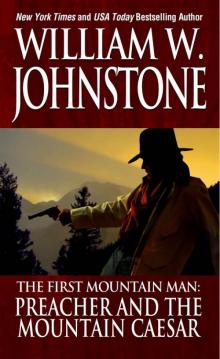 Preacher and the Mountain Caesar
Preacher and the Mountain Caesar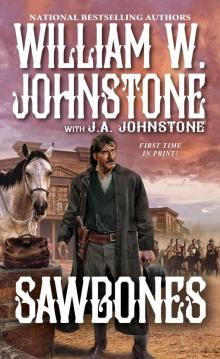 Sawbones
Sawbones Preacher's Hell Storm
Preacher's Hell Storm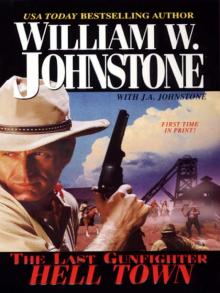 The Last Gunfighter: Hell Town
The Last Gunfighter: Hell Town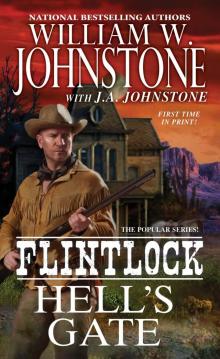 Hell's Gate
Hell's Gate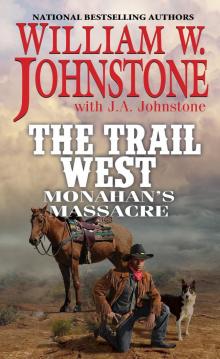 Monahan's Massacre
Monahan's Massacre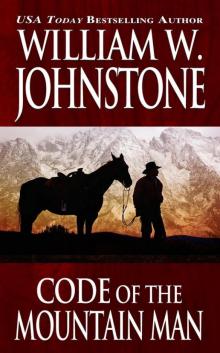 Code of the Mountain Man
Code of the Mountain Man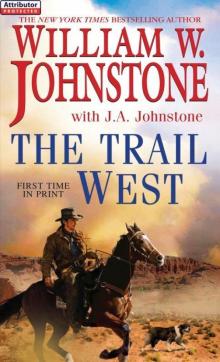 The Trail West
The Trail West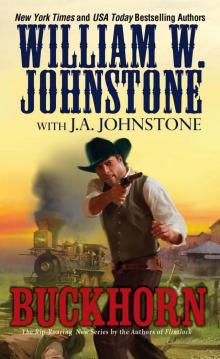 Buckhorn
Buckhorn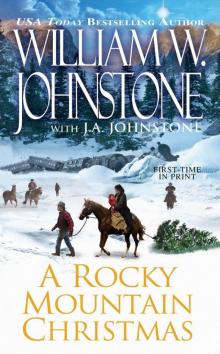 A Rocky Mountain Christmas
A Rocky Mountain Christmas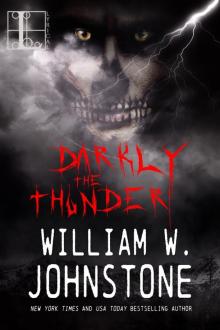 Darkly The Thunder
Darkly The Thunder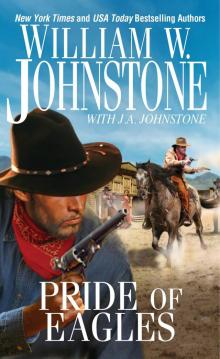 Pride of Eagles
Pride of Eagles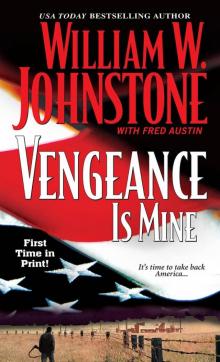 Vengeance Is Mine
Vengeance Is Mine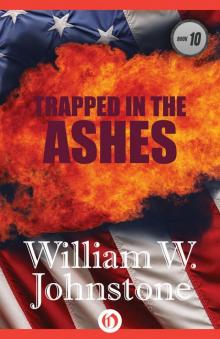 Trapped in the Ashes
Trapped in the Ashes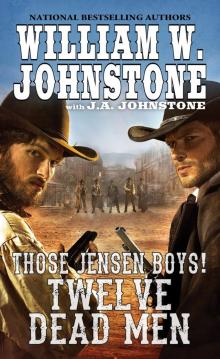 Twelve Dead Men
Twelve Dead Men Legion of Fire
Legion of Fire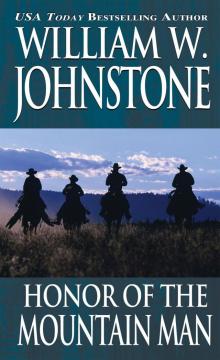 Honor of the Mountain Man
Honor of the Mountain Man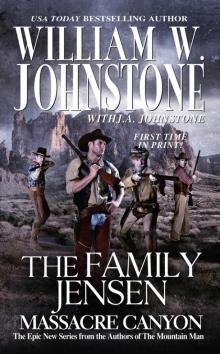 Massacre Canyon
Massacre Canyon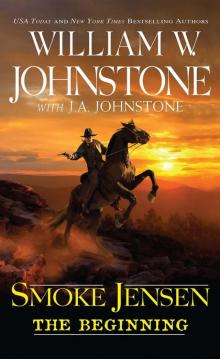 Smoke Jensen, the Beginning
Smoke Jensen, the Beginning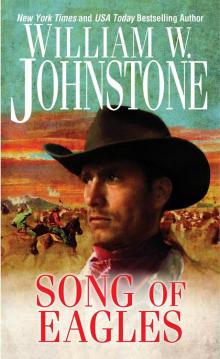 Song of Eagles
Song of Eagles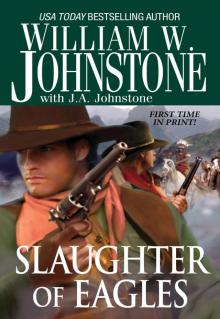 Slaughter of Eagles
Slaughter of Eagles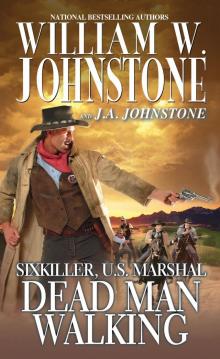 Dead Man Walking
Dead Man Walking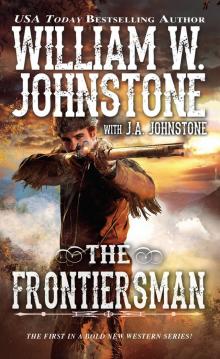 The Frontiersman
The Frontiersman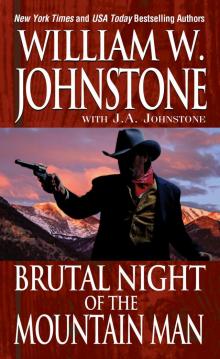 Brutal Night of the Mountain Man
Brutal Night of the Mountain Man Battle in the Ashes
Battle in the Ashes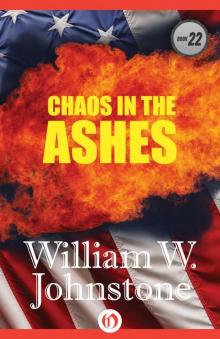 Chaos in the Ashes
Chaos in the Ashes MacCallister Kingdom Come
MacCallister Kingdom Come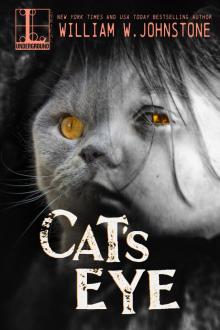 Cat's Eye
Cat's Eye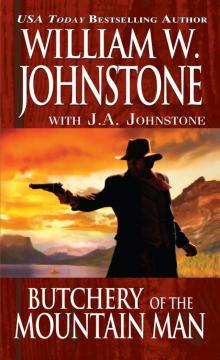 Butchery of the Mountain Man
Butchery of the Mountain Man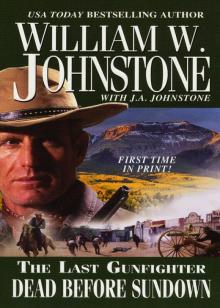 Dead Before Sundown
Dead Before Sundown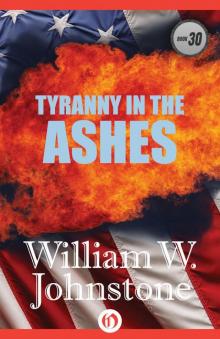 Tyranny in the Ashes
Tyranny in the Ashes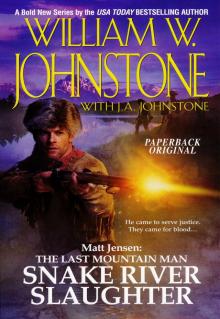 Snake River Slaughter
Snake River Slaughter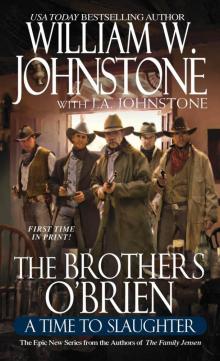 A Time to Slaughter
A Time to Slaughter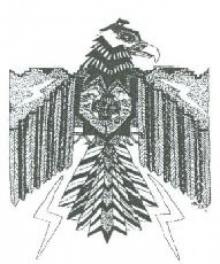 The Last of the Dogteam
The Last of the Dogteam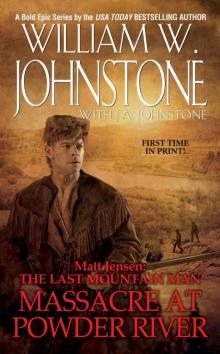 Massacre at Powder River
Massacre at Powder River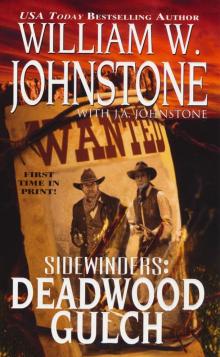 Sidewinders
Sidewinders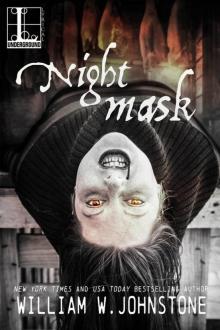 Night Mask
Night Mask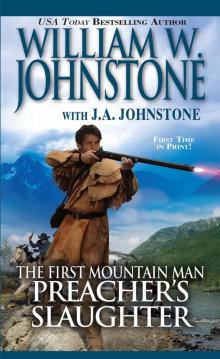 Preacher's Slaughter
Preacher's Slaughter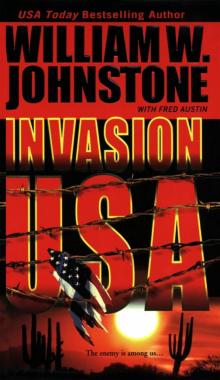 Invasion USA
Invasion USA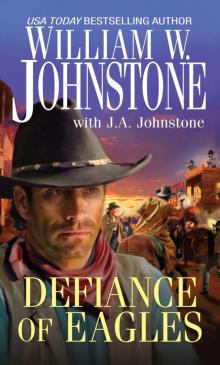 Defiance of Eagles
Defiance of Eagles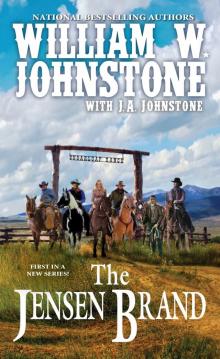 The Jensen Brand
The Jensen Brand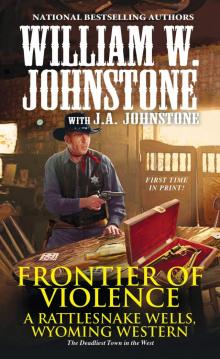 Frontier of Violence
Frontier of Violence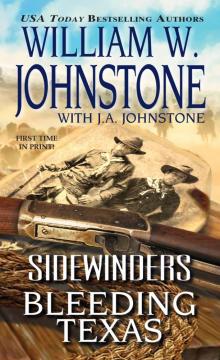 Bleeding Texas
Bleeding Texas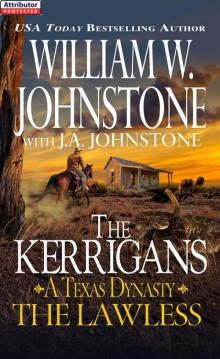 The Lawless
The Lawless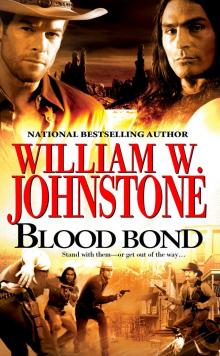 Blood Bond
Blood Bond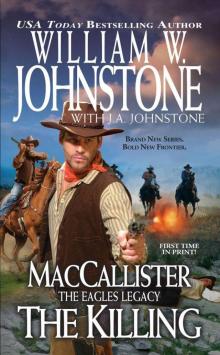 MacCallister: The Eagles Legacy: The Killing
MacCallister: The Eagles Legacy: The Killing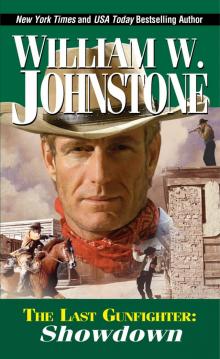 Showdown
Showdown The Legend of Perley Gates
The Legend of Perley Gates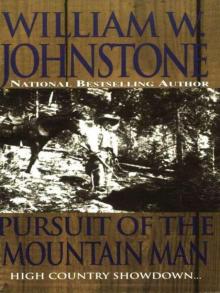 Pursuit Of The Mountain Man
Pursuit Of The Mountain Man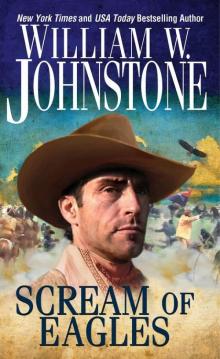 Scream of Eagles
Scream of Eagles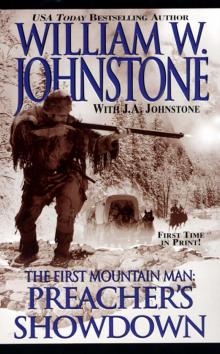 Preacher's Showdown
Preacher's Showdown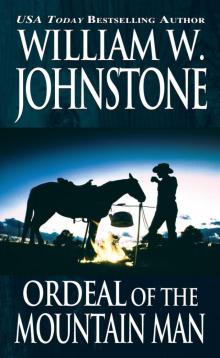 Ordeal of the Mountain Man
Ordeal of the Mountain Man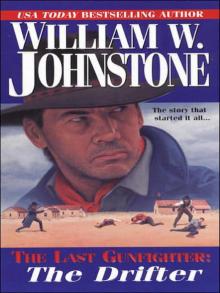 The Last Gunfighter: The Drifter
The Last Gunfighter: The Drifter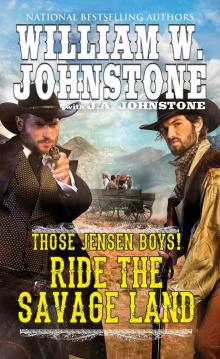 Ride the Savage Land
Ride the Savage Land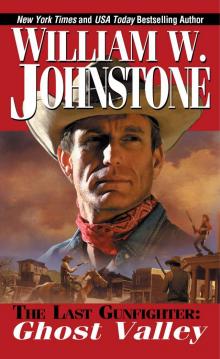 Ghost Valley
Ghost Valley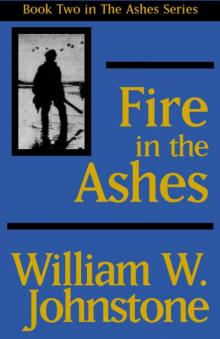 Fire in the Ashes
Fire in the Ashes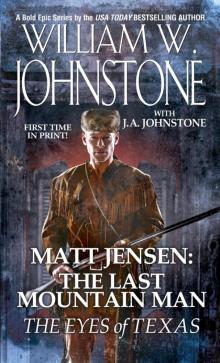 Matt Jensen, The Last Mountain Man The Eyes of Texas
Matt Jensen, The Last Mountain Man The Eyes of Texas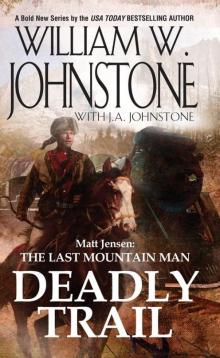 Deadly Trail
Deadly Trail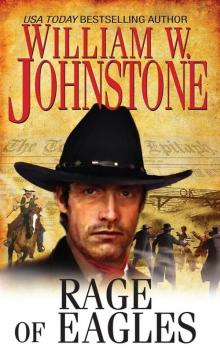 Rage of Eagles
Rage of Eagles Moonshine Massacre
Moonshine Massacre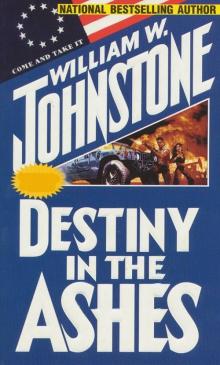 Destiny in the Ashes
Destiny in the Ashes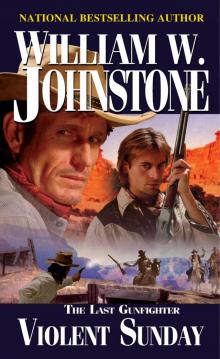 Violent Sunday
Violent Sunday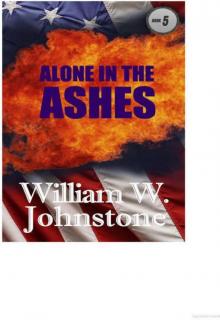 Alone in the Ashes ta-5
Alone in the Ashes ta-5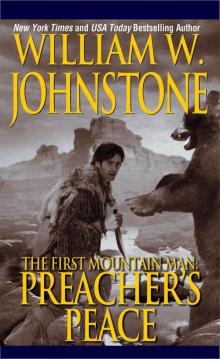 Preacher's Peace
Preacher's Peace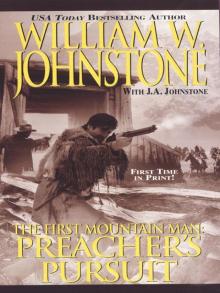 Preacher's Pursuit (The First Mountain Man)
Preacher's Pursuit (The First Mountain Man)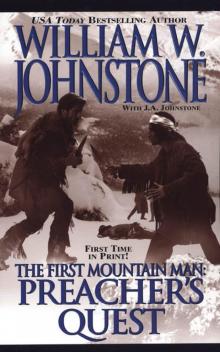 Preacher's Quest
Preacher's Quest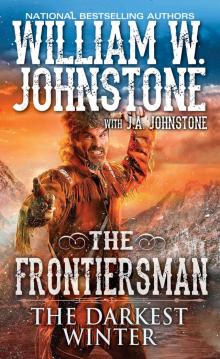 The Darkest Winter
The Darkest Winter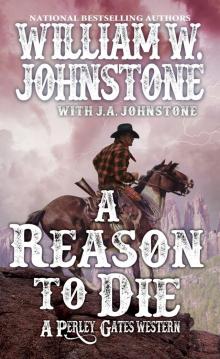 A Reason to Die
A Reason to Die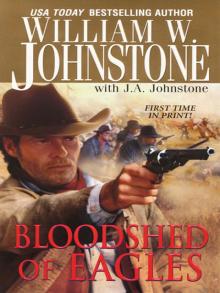 Bloodshed of Eagles
Bloodshed of Eagles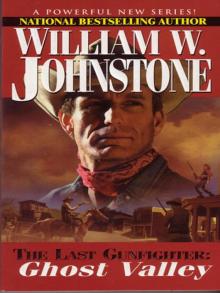 The Last Gunfighter: Ghost Valley
The Last Gunfighter: Ghost Valley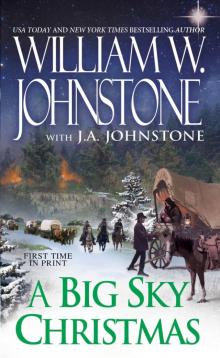 A Big Sky Christmas
A Big Sky Christmas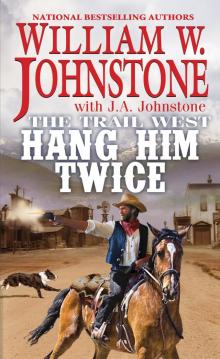 Hang Him Twice
Hang Him Twice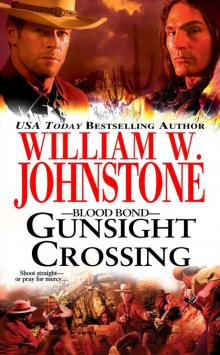 Blood Bond 3
Blood Bond 3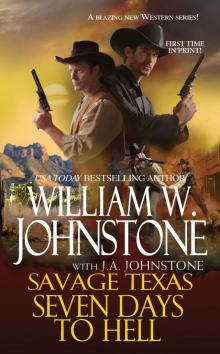 Seven Days to Hell
Seven Days to Hell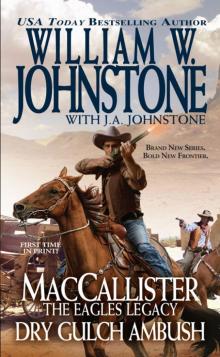 MacCallister, the Eagles Legacy: Dry Gulch Ambush
MacCallister, the Eagles Legacy: Dry Gulch Ambush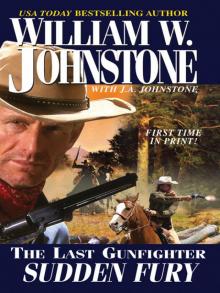 The Last Gunfighter
The Last Gunfighter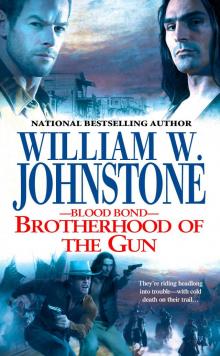 Brotherhood of the Gun
Brotherhood of the Gun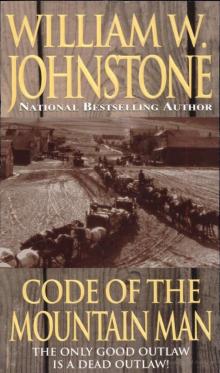 Code of the Mountain Man tlmm-8
Code of the Mountain Man tlmm-8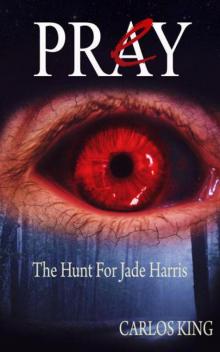 Prey
Prey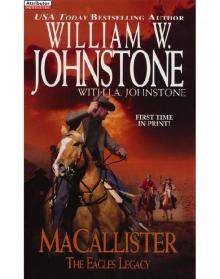 MacAllister
MacAllister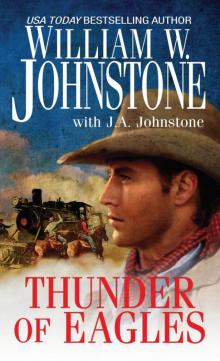 Thunder of Eagles
Thunder of Eagles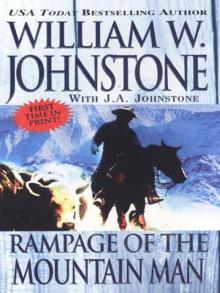 Rampage of the Mountain Man
Rampage of the Mountain Man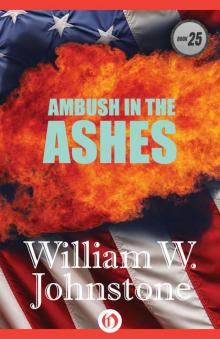 Ambush in the Ashes
Ambush in the Ashes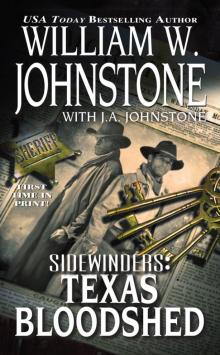 Texas Bloodshed s-6
Texas Bloodshed s-6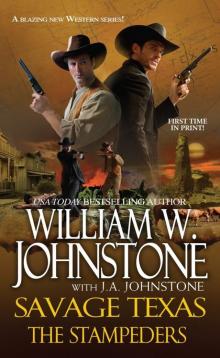 Savage Texas: The Stampeders
Savage Texas: The Stampeders Sixkiller, U.S. Marshal
Sixkiller, U.S. Marshal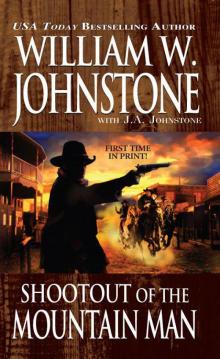 Shootout of the Mountain Man
Shootout of the Mountain Man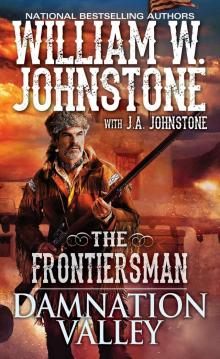 Damnation Valley
Damnation Valley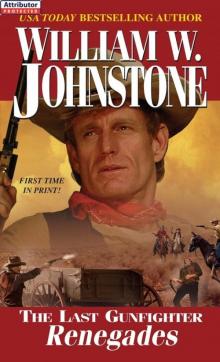 Renegades
Renegades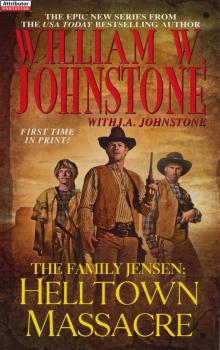 The Family Jensen
The Family Jensen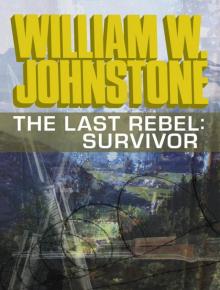 The Last Rebel: Survivor
The Last Rebel: Survivor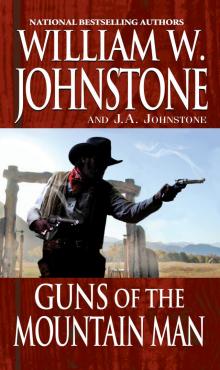 Guns of the Mountain Man
Guns of the Mountain Man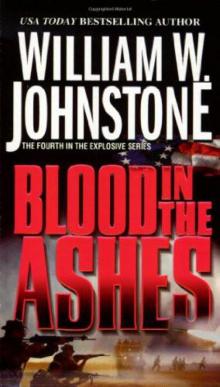 Blood in the Ashes ta-4
Blood in the Ashes ta-4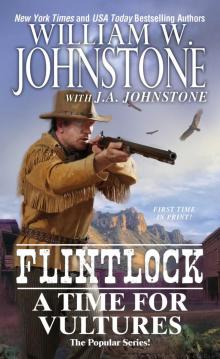 A Time for Vultures
A Time for Vultures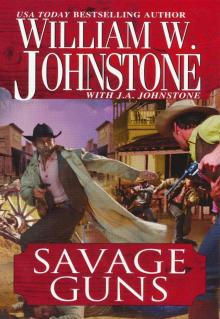 Savage Guns
Savage Guns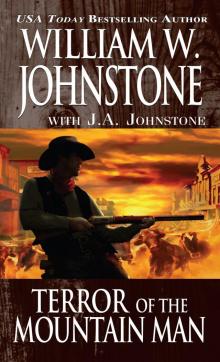 Terror of the Mountain Man
Terror of the Mountain Man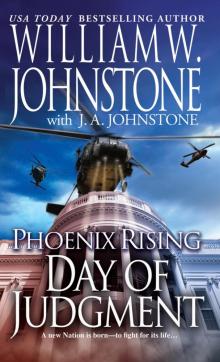 Phoenix Rising:
Phoenix Rising: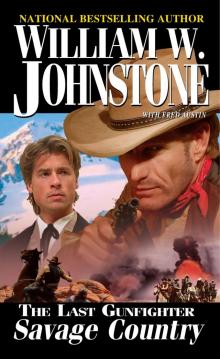 Savage Country
Savage Country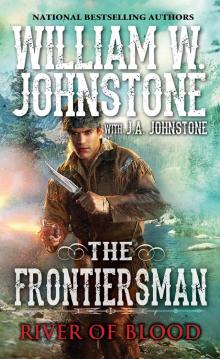 River of Blood
River of Blood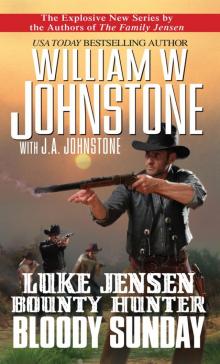 Bloody Sunday
Bloody Sunday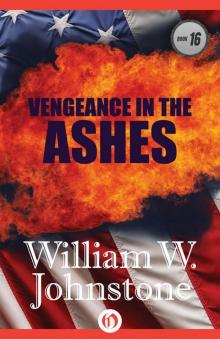 Vengeance in the Ashes
Vengeance in the Ashes Butch Cassidy the Lost Years
Butch Cassidy the Lost Years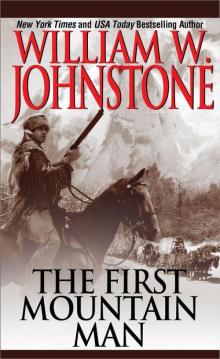 The First Mountain Man
The First Mountain Man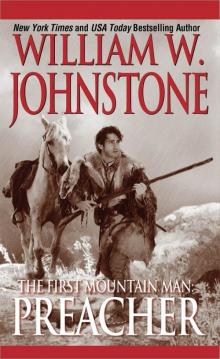 Preacher
Preacher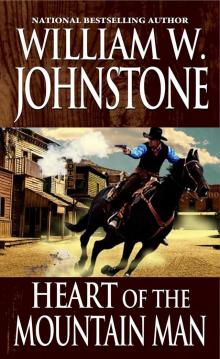 Heart of the Mountain Man
Heart of the Mountain Man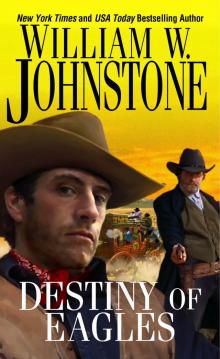 Destiny of Eagles
Destiny of Eagles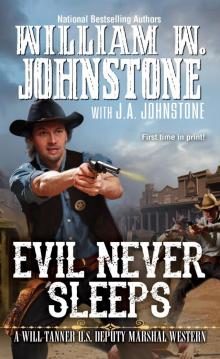 Evil Never Sleeps
Evil Never Sleeps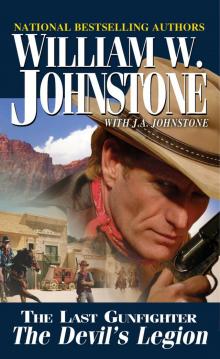 The Devil's Legion
The Devil's Legion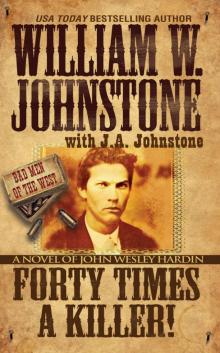 Forty Times a Killer
Forty Times a Killer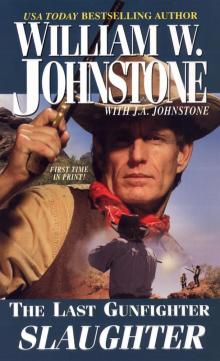 Slaughter
Slaughter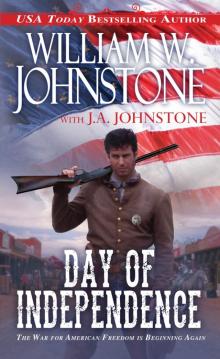 Day of Independence
Day of Independence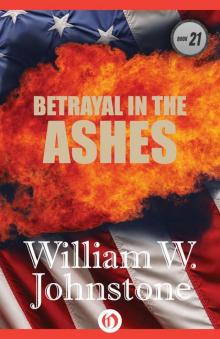 Betrayal in the Ashes
Betrayal in the Ashes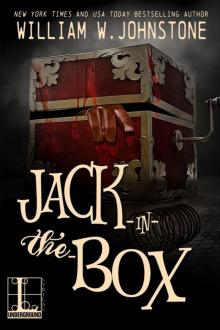 Jack-in-the-Box
Jack-in-the-Box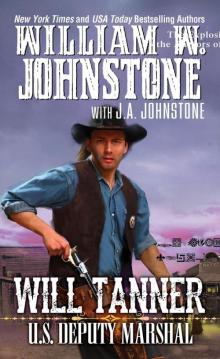 Will Tanner
Will Tanner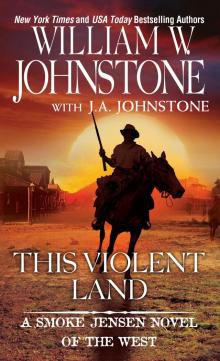 This Violent Land
This Violent Land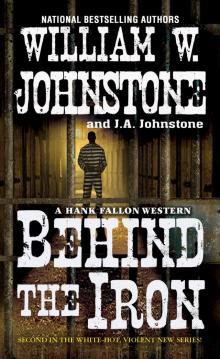 Behind the Iron
Behind the Iron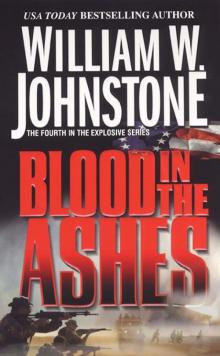 Blood in the Ashes
Blood in the Ashes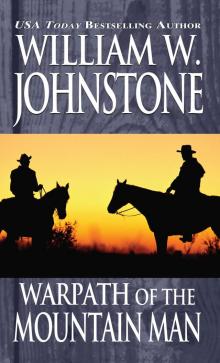 Warpath of the Mountain Man
Warpath of the Mountain Man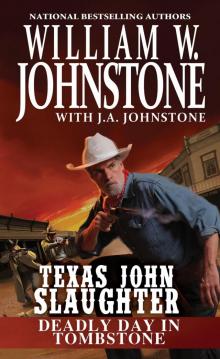 Deadly Day in Tombstone
Deadly Day in Tombstone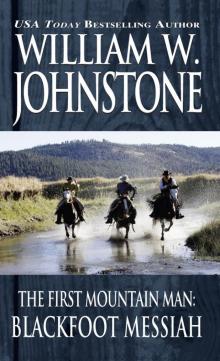 Blackfoot Messiah
Blackfoot Messiah Pitchfork Pass
Pitchfork Pass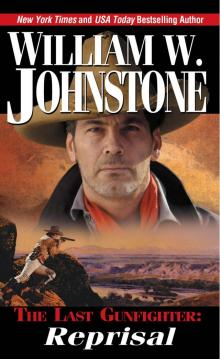 Reprisal
Reprisal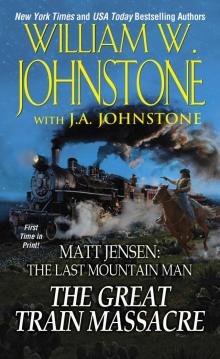 The Great Train Massacre
The Great Train Massacre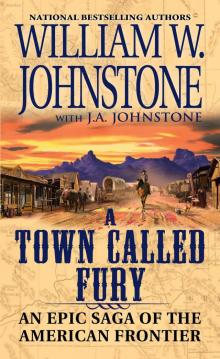 A Town Called Fury
A Town Called Fury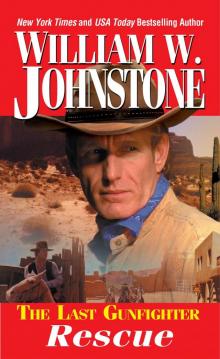 Rescue
Rescue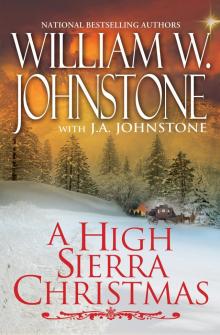 A High Sierra Christmas
A High Sierra Christmas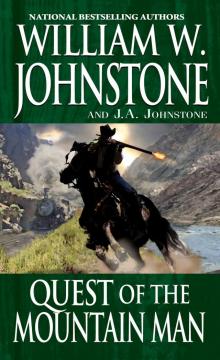 Quest of the Mountain Man
Quest of the Mountain Man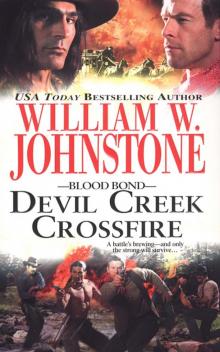 Blood Bond 5
Blood Bond 5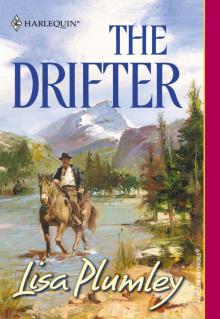 The Drifter
The Drifter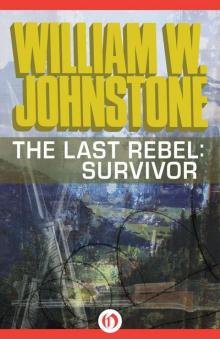 Survivor (The Ashes Book 36)
Survivor (The Ashes Book 36)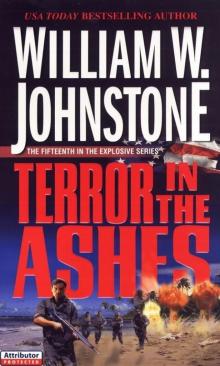 Terror in the Ashes
Terror in the Ashes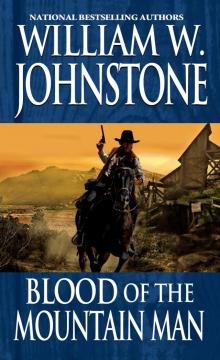 Blood of the Mountain Man
Blood of the Mountain Man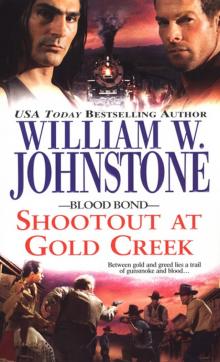 Blood Bond 7
Blood Bond 7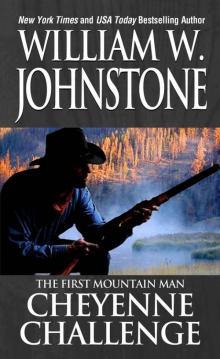 Cheyenne Challenge
Cheyenne Challenge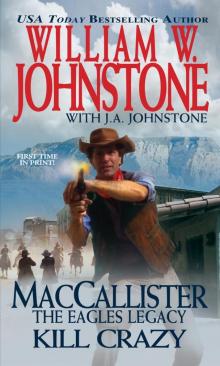 Kill Crazy
Kill Crazy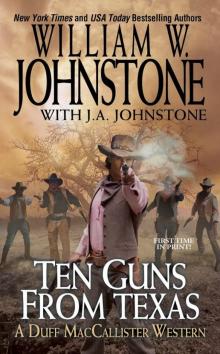 Ten Guns from Texas
Ten Guns from Texas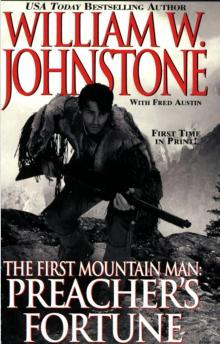 Preacher's Fortune
Preacher's Fortune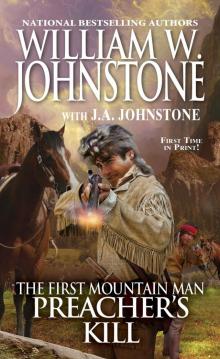 Preacher's Kill
Preacher's Kill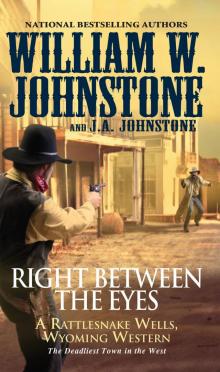 Right between the Eyes
Right between the Eyes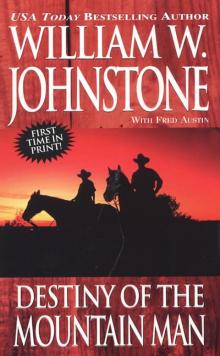 Destiny Of The Mountain Man
Destiny Of The Mountain Man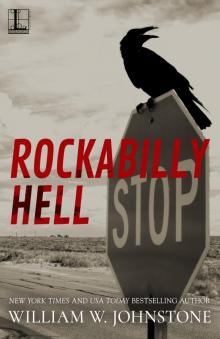 Rockabilly Hell
Rockabilly Hell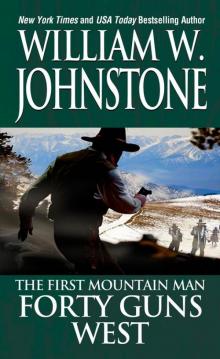 Forty Guns West
Forty Guns West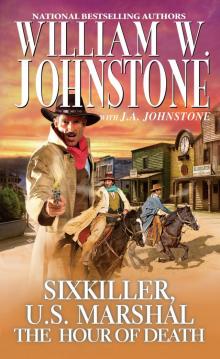 Hour of Death
Hour of Death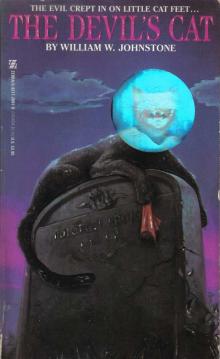 The Devil's Cat
The Devil's Cat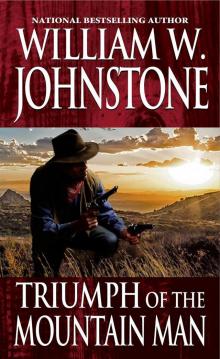 Triumph of the Mountain Man
Triumph of the Mountain Man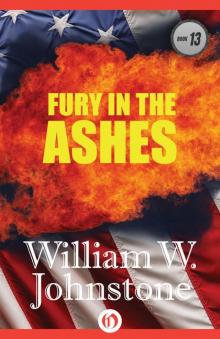 Fury in the Ashes
Fury in the Ashes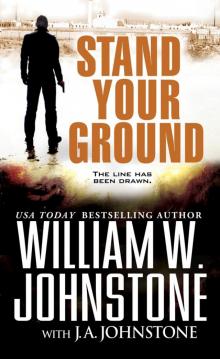 Stand Your Ground
Stand Your Ground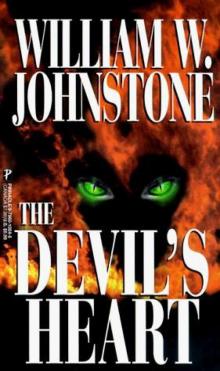 The Devil's Heart
The Devil's Heart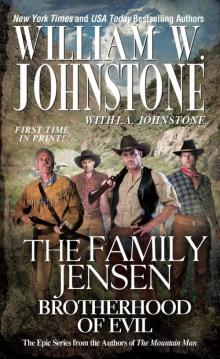 Brotherhood of Evil
Brotherhood of Evil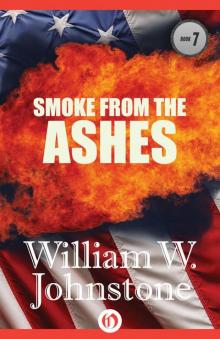 Smoke from the Ashes
Smoke from the Ashes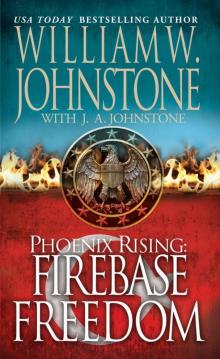 Firebase Freedom
Firebase Freedom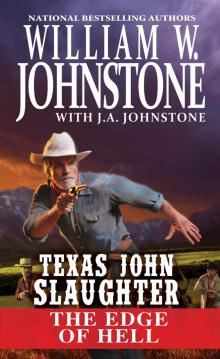 The Edge of Hell
The Edge of Hell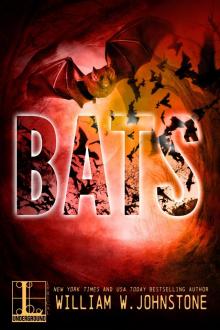 Bats
Bats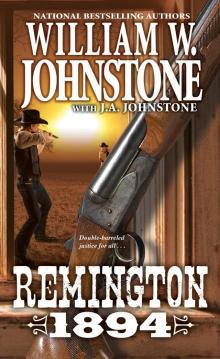 Remington 1894
Remington 1894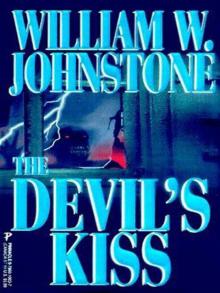 Devil's Kiss d-1
Devil's Kiss d-1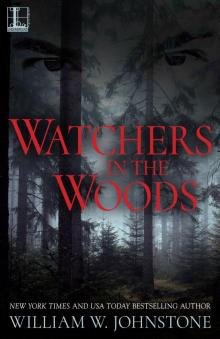 Watchers in the Woods
Watchers in the Woods Devil's Heart
Devil's Heart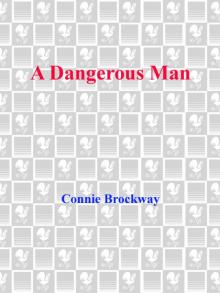 A Dangerous Man
A Dangerous Man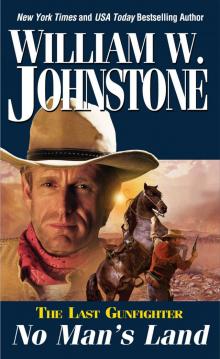 No Man's Land
No Man's Land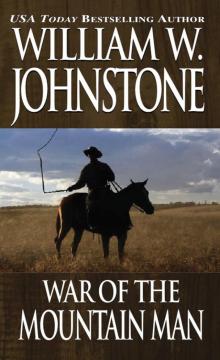 War of the Mountain Man
War of the Mountain Man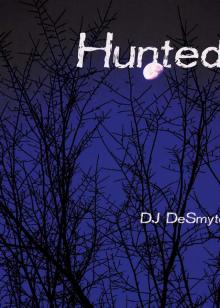 Hunted
Hunted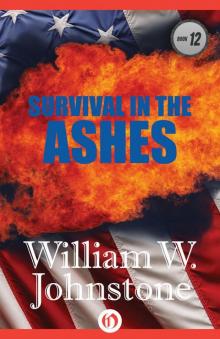 Survival in the Ashes
Survival in the Ashes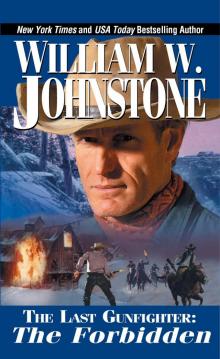 The Forbidden
The Forbidden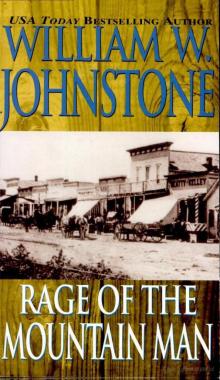 Rage of the Mountain Man
Rage of the Mountain Man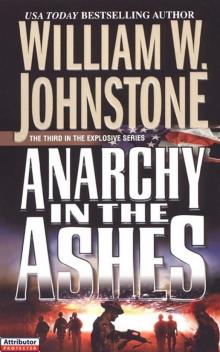 Anarchy in the Ashes
Anarchy in the Ashes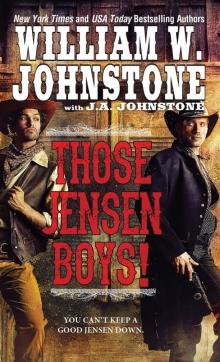 Those Jensen Boys!
Those Jensen Boys!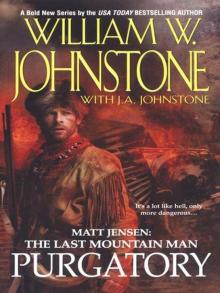 Matt Jensen: The Last Mountain Man Purgatory
Matt Jensen: The Last Mountain Man Purgatory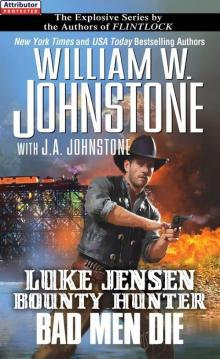 Bad Men Die
Bad Men Die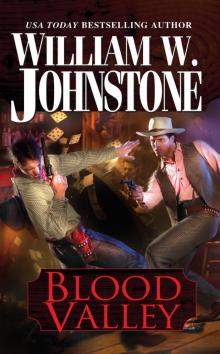 Blood Valley
Blood Valley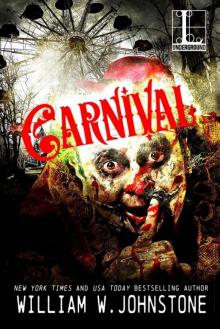 Carnival
Carnival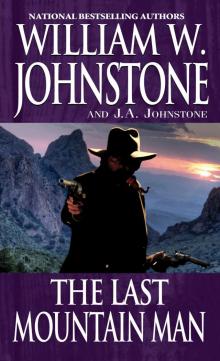 The Last Mountain Man
The Last Mountain Man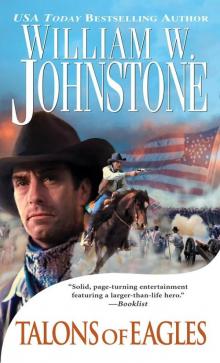 Talons of Eagles
Talons of Eagles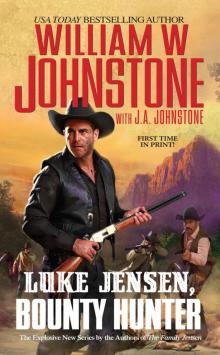 Bounty Hunter lj-1
Bounty Hunter lj-1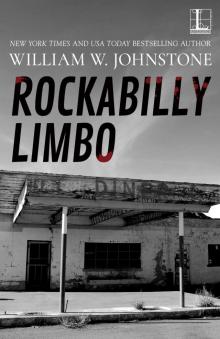 Rockabilly Limbo
Rockabilly Limbo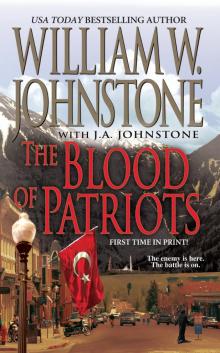 The Blood of Patriots
The Blood of Patriots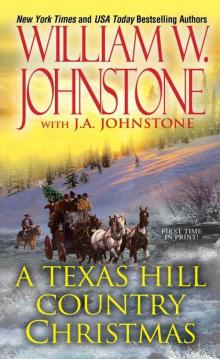 A Texas Hill Country Christmas
A Texas Hill Country Christmas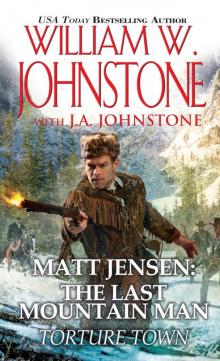 Torture Town
Torture Town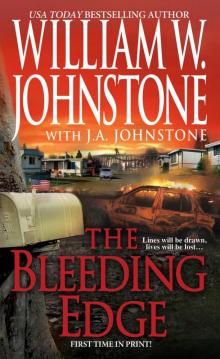 The Bleeding Edge
The Bleeding Edge Gunsmoke and Gold
Gunsmoke and Gold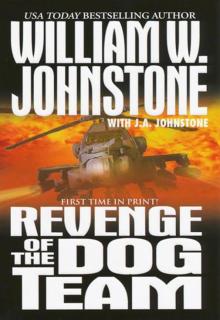 Revenge of the Dog Team
Revenge of the Dog Team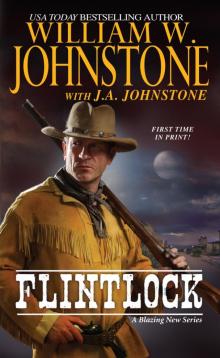 Flintlock
Flintlock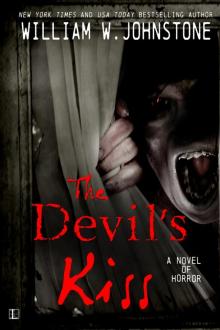 Devil's Kiss
Devil's Kiss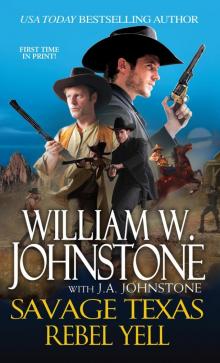 Rebel Yell
Rebel Yell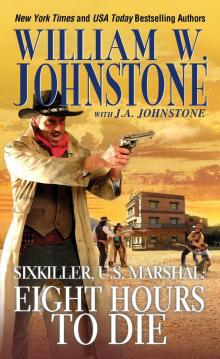 Eight Hours to Die
Eight Hours to Die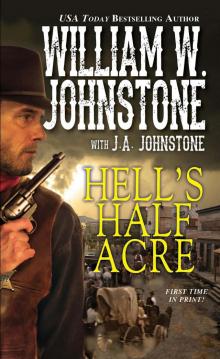 Hell's Half Acre
Hell's Half Acre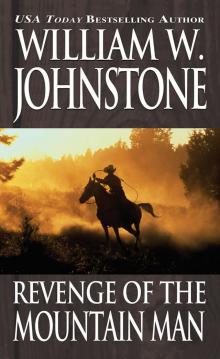 Revenge of the Mountain Man
Revenge of the Mountain Man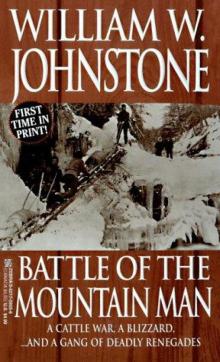 Battle of the Mountain Man
Battle of the Mountain Man Trek of the Mountain Man
Trek of the Mountain Man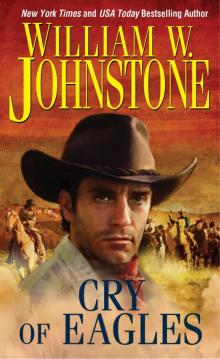 Cry of Eagles
Cry of Eagles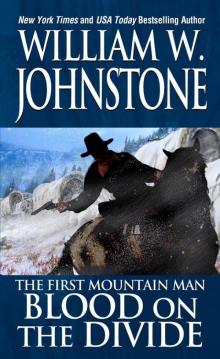 Blood on the Divide
Blood on the Divide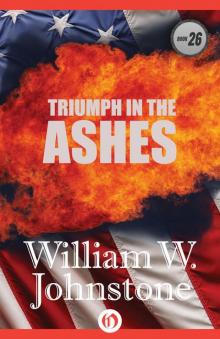 Triumph in the Ashes
Triumph in the Ashes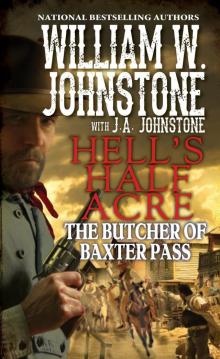 The Butcher of Baxter Pass
The Butcher of Baxter Pass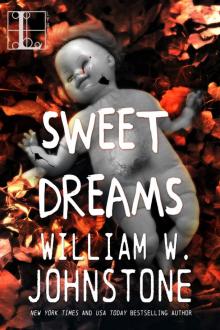 Sweet Dreams
Sweet Dreams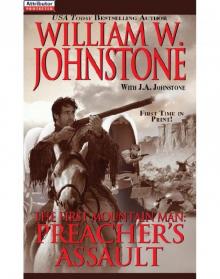 Preacher's Assault
Preacher's Assault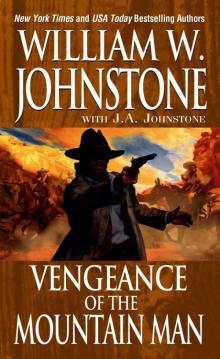 Vengeance of the Mountain Man
Vengeance of the Mountain Man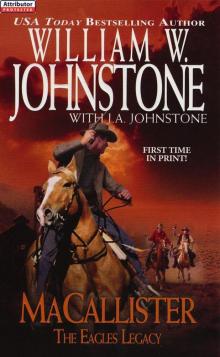 MacCallister: The Eagles Legacy
MacCallister: The Eagles Legacy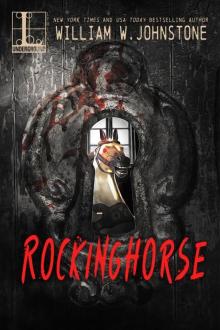 Rockinghorse
Rockinghorse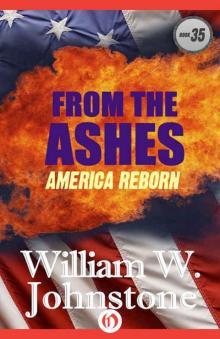 From The Ashes: America Reborn
From The Ashes: America Reborn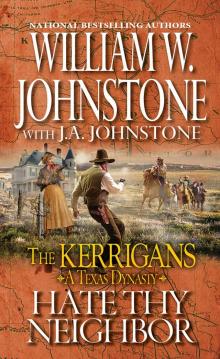 Hate Thy Neighbor
Hate Thy Neighbor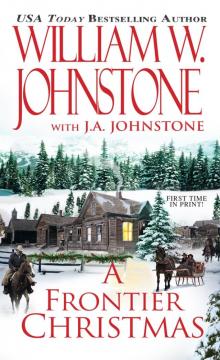 A Frontier Christmas
A Frontier Christmas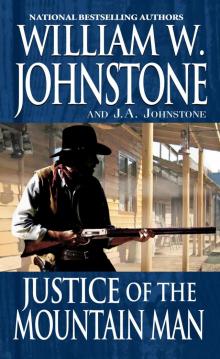 Justice of the Mountain Man
Justice of the Mountain Man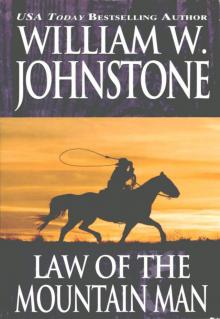 Law of the Mountain Man
Law of the Mountain Man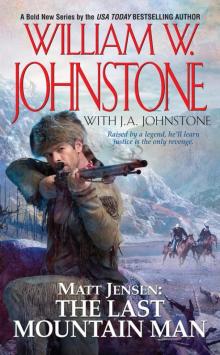 Matt Jensen, The Last Mountain Man
Matt Jensen, The Last Mountain Man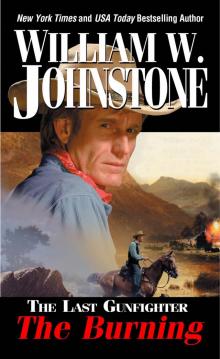 Burning
Burning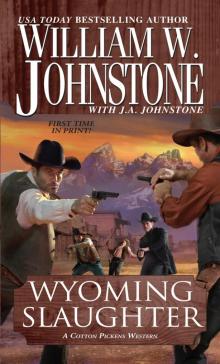 Wyoming Slaughter
Wyoming Slaughter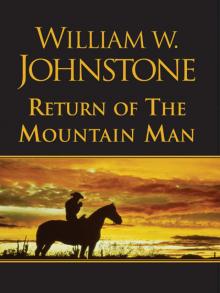 Return of the Mountain Man
Return of the Mountain Man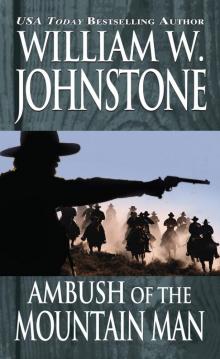 Ambush of the Mountain Man
Ambush of the Mountain Man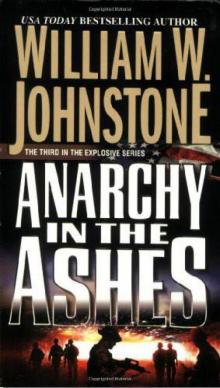 Anarchy in the Ashes ta-3
Anarchy in the Ashes ta-3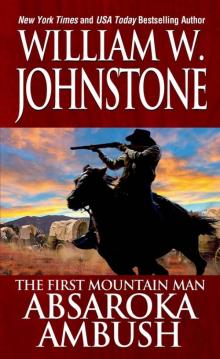 Absaroka Ambush
Absaroka Ambush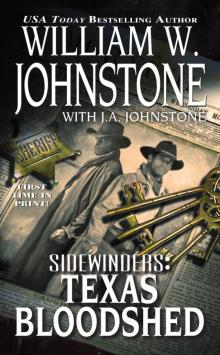 Texas Bloodshed
Texas Bloodshed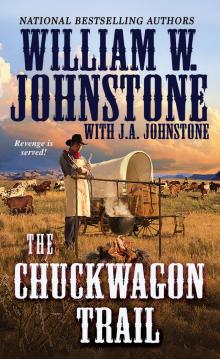 The Chuckwagon Trail
The Chuckwagon Trail The Violent Land
The Violent Land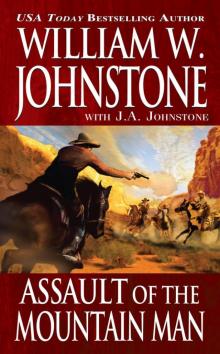 Assault of the Mountain Man
Assault of the Mountain Man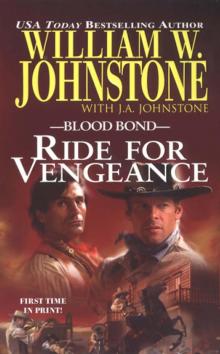 Ride for Vengeance
Ride for Vengeance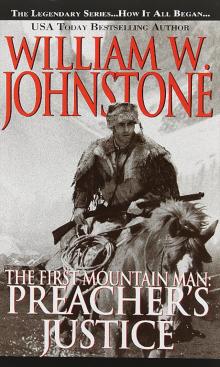 Preacher's Justice
Preacher's Justice Manhunt
Manhunt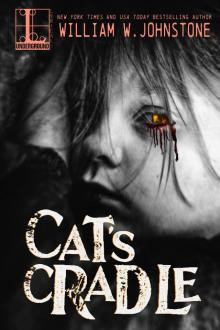 Cat's Cradle
Cat's Cradle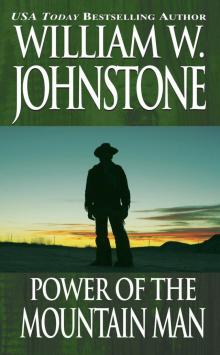 Power of the Mountain Man
Power of the Mountain Man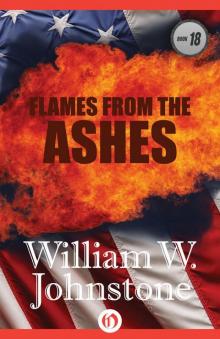 Flames from the Ashes
Flames from the Ashes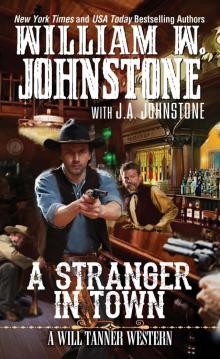 A Stranger in Town
A Stranger in Town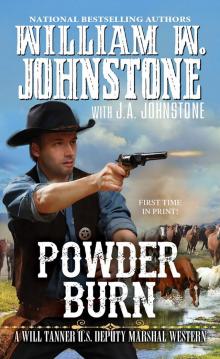 Powder Burn
Powder Burn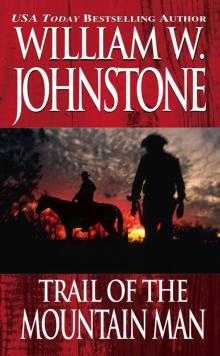 Trail of the Mountain Man
Trail of the Mountain Man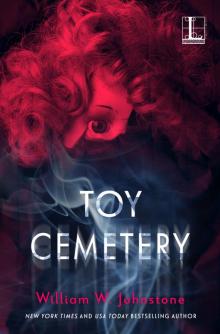 Toy Cemetery
Toy Cemetery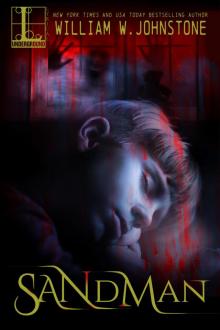 Sandman
Sandman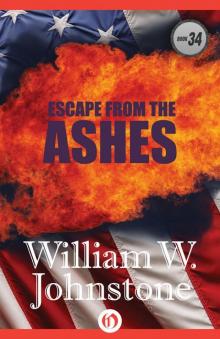 Escape from the Ashes
Escape from the Ashes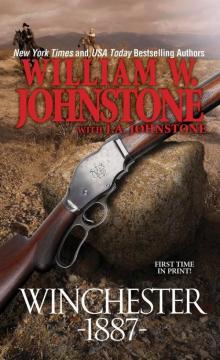 Winchester 1887
Winchester 1887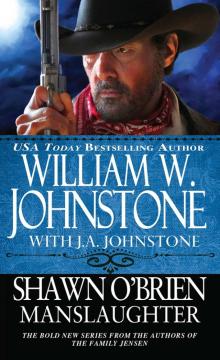 Shawn O'Brien Manslaughter
Shawn O'Brien Manslaughter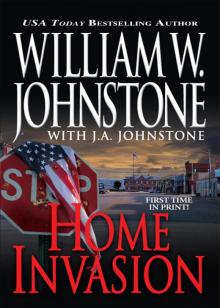 Home Invasion
Home Invasion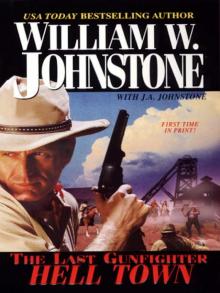 Hell Town
Hell Town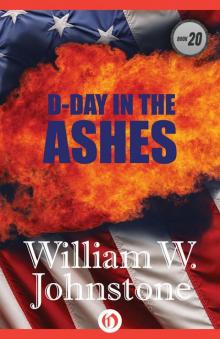 D-Day in the Ashes
D-Day in the Ashes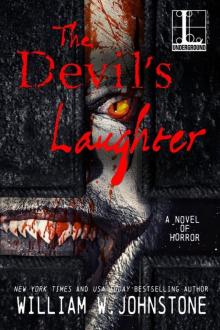 The Devil's Laughter
The Devil's Laughter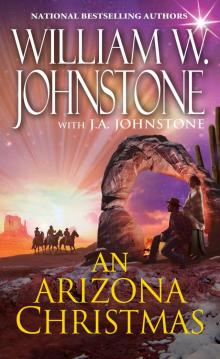 An Arizona Christmas
An Arizona Christmas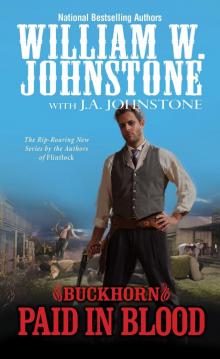 Paid in Blood
Paid in Blood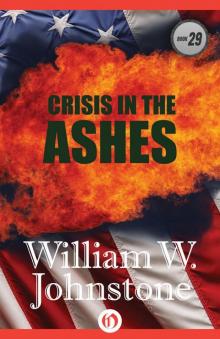 Crisis in the Ashes
Crisis in the Ashes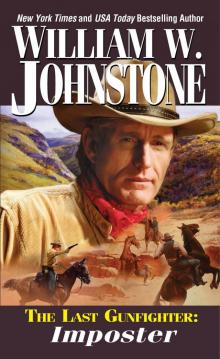 Imposter
Imposter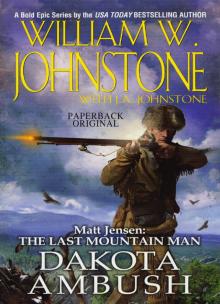 Dakota Ambush
Dakota Ambush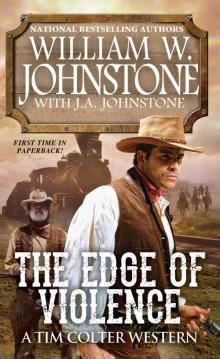 The Edge of Violence
The Edge of Violence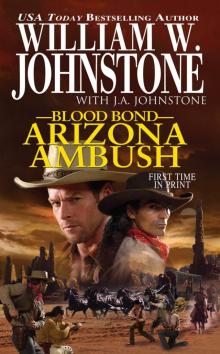 Arizona Ambush
Arizona Ambush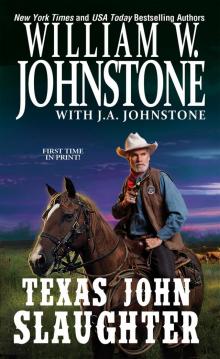 Texas John Slaughter
Texas John Slaughter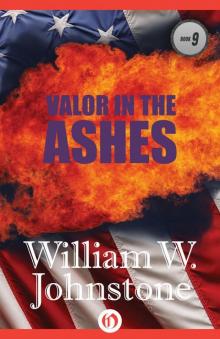 Valor in the Ashes
Valor in the Ashes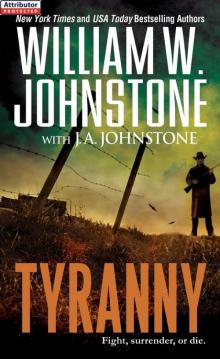 Tyranny
Tyranny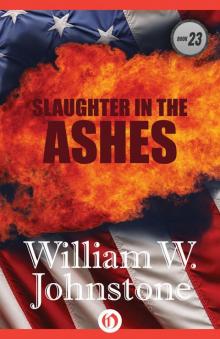 Slaughter in the Ashes
Slaughter in the Ashes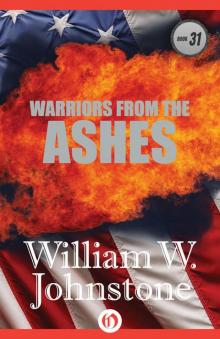 Warriors from the Ashes
Warriors from the Ashes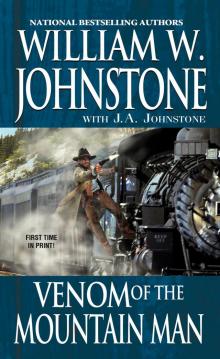 Venom of the Mountain Man
Venom of the Mountain Man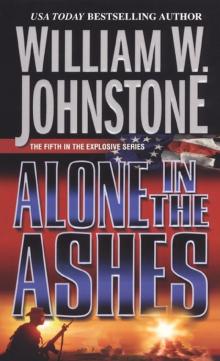 Alone in the Ashes
Alone in the Ashes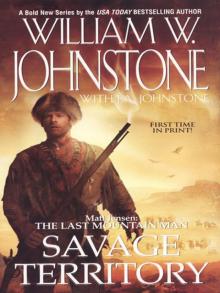 Matt Jensen, The Last Mountain Man Savage Territory
Matt Jensen, The Last Mountain Man Savage Territory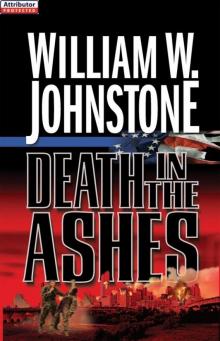 Death in the Ashes
Death in the Ashes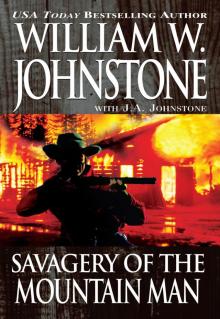 Savagery of The Mountain Man
Savagery of The Mountain Man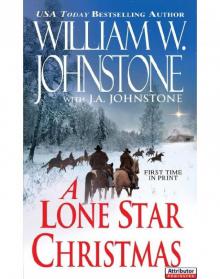 A Lone Star Christmas
A Lone Star Christmas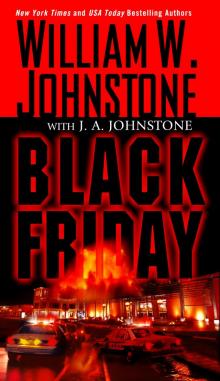 Black Friday
Black Friday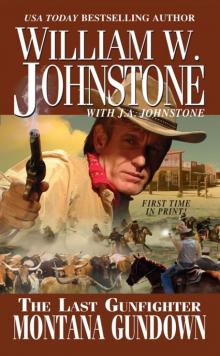 Montana Gundown
Montana Gundown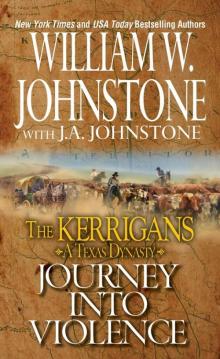 Journey into Violence
Journey into Violence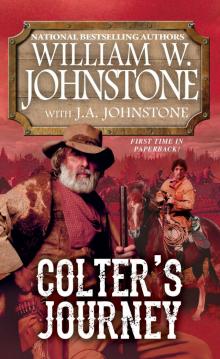 Colter's Journey
Colter's Journey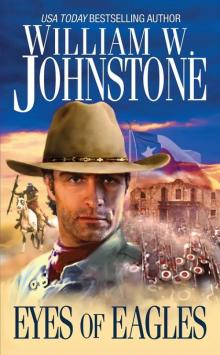 Eyes of Eagles
Eyes of Eagles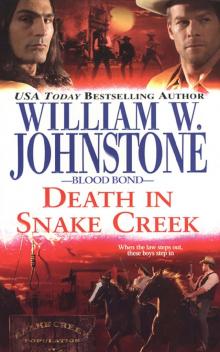 Blood Bond 9
Blood Bond 9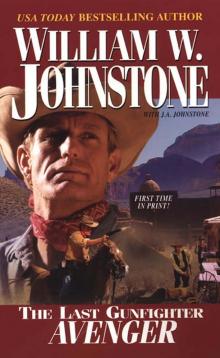 Avenger
Avenger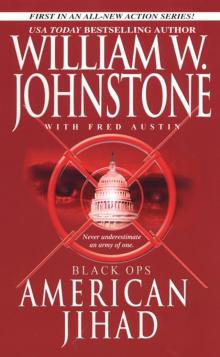 Black Ops #1
Black Ops #1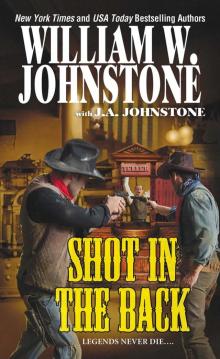 Shot in the Back
Shot in the Back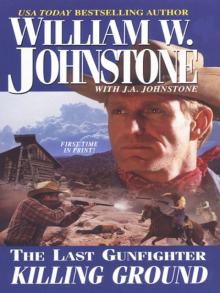 The Last Gunfighter: Killing Ground
The Last Gunfighter: Killing Ground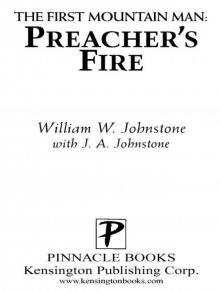 Preacher's Fire
Preacher's Fire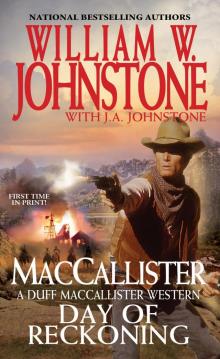 Day of Reckoning
Day of Reckoning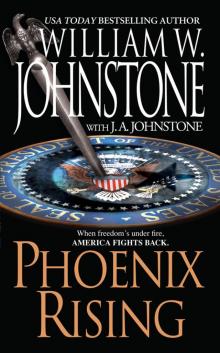 Phoenix Rising pr-1
Phoenix Rising pr-1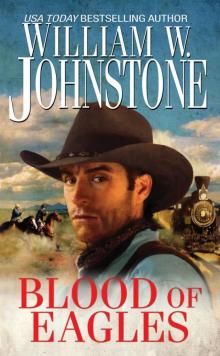 Blood of Eagles
Blood of Eagles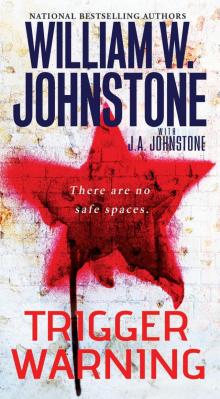 Trigger Warning
Trigger Warning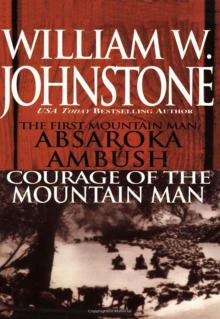 Absaroka Ambush (first Mt Man)/Courage Of The Mt Man
Absaroka Ambush (first Mt Man)/Courage Of The Mt Man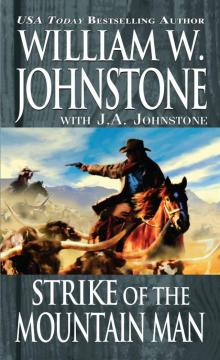 Strike of the Mountain Man
Strike of the Mountain Man